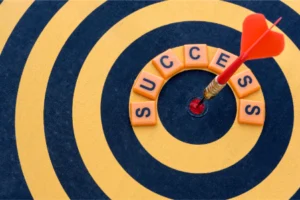People often imagine business owners as having it all: power, money, and freedom from
problems. But the reality can be quite different. Many business owners struggle with
unhappiness, and it’s important to understand why.
The Overlapping Circles of Desire, Capability, and Action
Imagine three circles: Want, representing what one desires, Can, representing one’s
capabilities, and Do, representing one’s actions. These circles can overlap, but not always
perfectly. Let’s explore these areas of overlap and how they impact happiness.
● Want, but Can’t and Don’t Do (The Dreamer): This is the realm of the unfulfilled
dreamer who longs for something but lacks the skills or resources to achieve it. It’s a
recipe for unhappiness.
● Can, but Don’t Want and Don’t Do (The Slacker): Here, someone has the ability to
act but lacks the motivation. This stagnation also leads to unhappiness.
● Do, but Don’t Want and Can’t (The Trapped Victim): This describes someone forced
into a situation they dislike and lack the power to change. It’s a miserable place to
be.
These are extreme scenarios with minimal overlap between the circles. Most business
owners fall into more nuanced areas.
The Overlap Zones: Where Business Owners Reside
● Want and Do, but Can’t (The Inept Business Owner): This describes someone with
dreams but lacking the skills or team to succeed. Improvement requires time, effort,
and potentially a change in approach.
● Do and Can, but Don’t Want (The Unhappy Business Owner): This is a common
zone for business owners. They’re stuck in a situation they both love and hate,
unable to escape the demands of their business.
● Want and Can, but Don’t Do (The Wannabe Entrepreneur): This describes someone
who aspires to own a business but hasn’t taken the steps to make it happen.
Finding Happiness: The Overlap Sweet Spot
The truly happy business owner is the one who operates in the sweet spot where Want, Can,
and Do all overlap. This requires self-awareness to understand your desires and capabilities.
The challenge is that these circles constantly change due to life circumstances.
The Path to Sustainable Happiness
Happiness isn’t a constant state, but it is achievable. It requires introspection (understanding
what’s missing) and foresight (planning for the future). For example, realizing the need for
an independent business and building a strong team can contribute significantly to long-
term happiness.
The Takeaway: Happiness Takes Work
Happiness for business owners is elusive, but not impossible. By understanding the interplay
between desires, capabilities, and actions, and by putting in the effort to achieve alignment,
business owners can find a path to lasting fulfillment.







